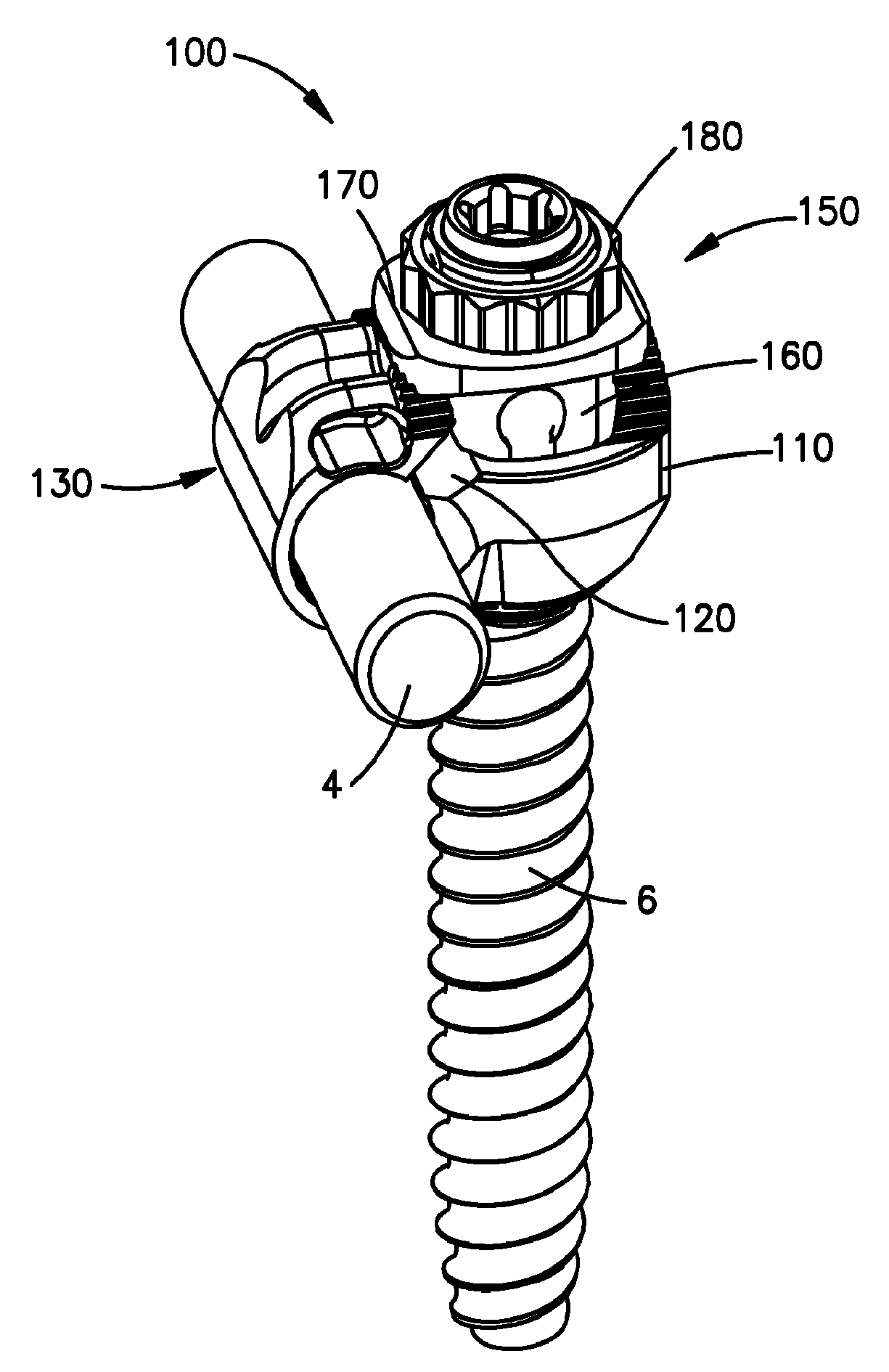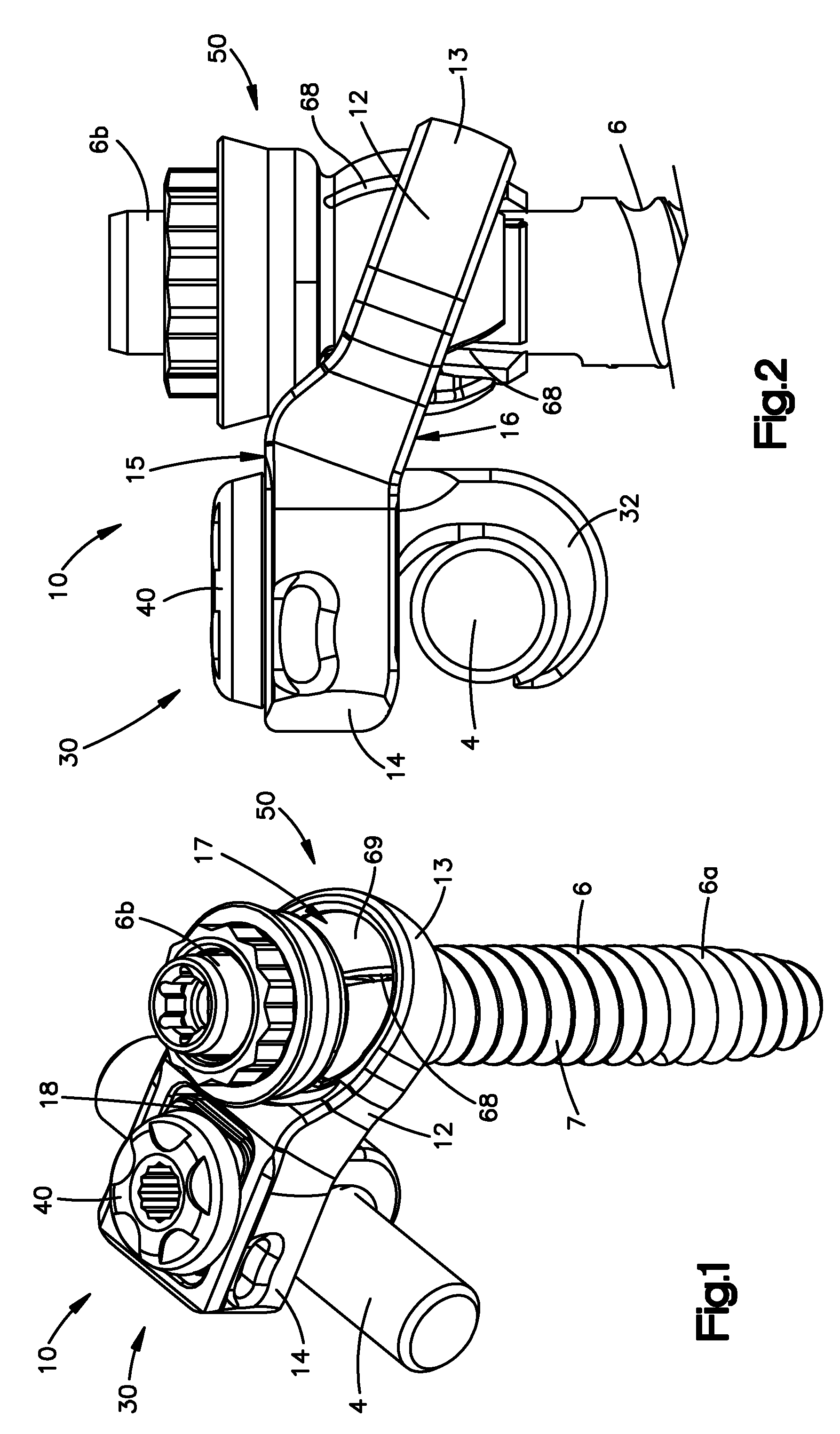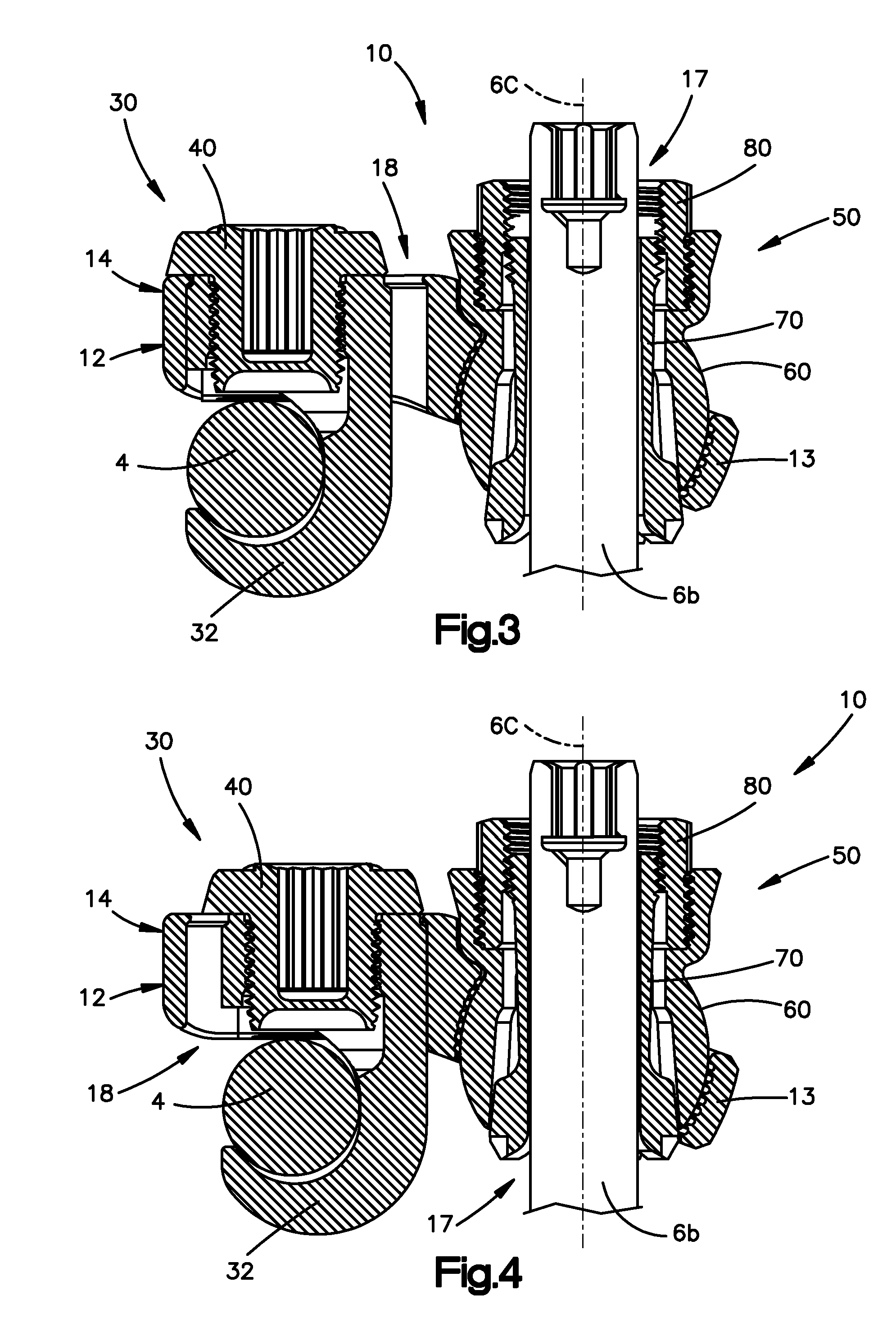Clamps used for interconnecting a bone anchor to a rod
a technology of bone anchors and clamps, which is applied in the field of clamps, can solve the problems of the diameter of the second opening formed in the housing to decrease, and achieve the effects of improving flexibility, better accommodating the longitudinal rod, and better accommodating the positioning of vertebra
- Summary
- Abstract
- Description
- Claims
- Application Information
AI Technical Summary
Benefits of technology
Problems solved by technology
Method used
Image
Examples
Embodiment Construction
[0084]Certain exemplary embodiments will now be described with reference to the drawings. In general, such embodiments relate to a clamp, by way of non-limiting example, a clamp for use in securing a bone anchor, and hence a bone (preferably a vertebra), with respect to a longitudinal rod (preferably a spinal rod). The clamp may include a housing, a rod clamping assembly, and a bone anchor clamping assembly. The clamp preferably enables the longitudinal axis of the rod to be offset or laterally displaced from the longitudinal axis of the bone anchor such that the longitudinal rod may be secured at a position laterally offset or displaced from the bone anchor. The rod clamping assembly may include a first position (e.g., a slack configuration) and a second position (e.g., a fastened configuration) wherein, when in the first position, the rod is moveable with respect to the clamp and, when in the second position, the position of the rod is fixed with respect to the clamp. That is, the...
PUM
 Login to View More
Login to View More Abstract
Description
Claims
Application Information
 Login to View More
Login to View More - R&D
- Intellectual Property
- Life Sciences
- Materials
- Tech Scout
- Unparalleled Data Quality
- Higher Quality Content
- 60% Fewer Hallucinations
Browse by: Latest US Patents, China's latest patents, Technical Efficacy Thesaurus, Application Domain, Technology Topic, Popular Technical Reports.
© 2025 PatSnap. All rights reserved.Legal|Privacy policy|Modern Slavery Act Transparency Statement|Sitemap|About US| Contact US: help@patsnap.com



